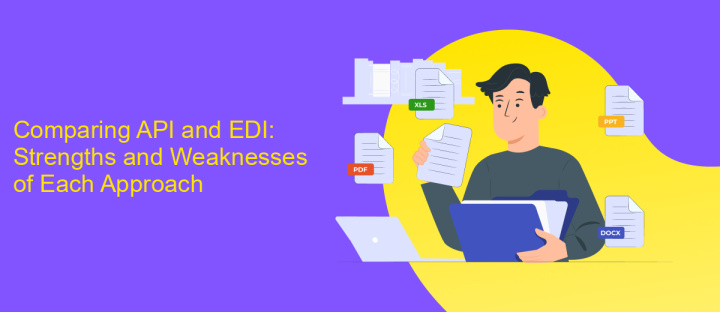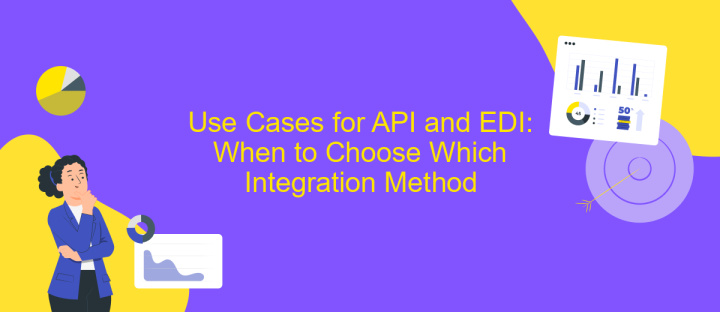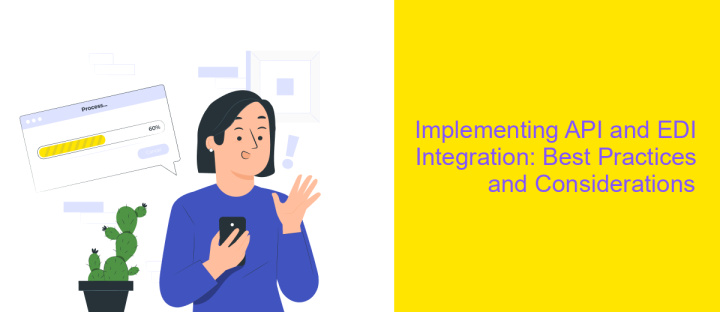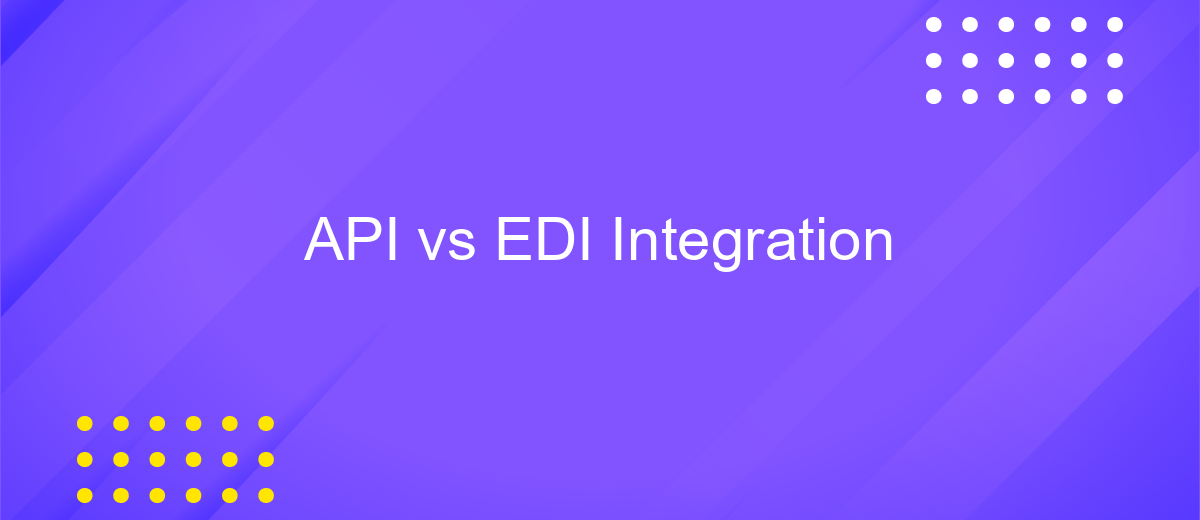API vs EDI Integration
In today's fast-paced digital landscape, businesses are constantly seeking efficient ways to streamline their operations and enhance data exchange. Two popular methods for achieving this are API (Application Programming Interface) and EDI (Electronic Data Interchange) integration. While both serve the purpose of facilitating communication between systems, they differ significantly in terms of flexibility, implementation, and use cases. This article explores the key differences and benefits of API versus EDI integration.
Understanding API and EDI Integration: Definitions and Key Differences
API (Application Programming Interface) and EDI (Electronic Data Interchange) are two pivotal technologies in the realm of data exchange. While both facilitate communication between systems, their methods and applications differ significantly. APIs enable real-time data exchange through web-based protocols, allowing seamless integration of modern applications. In contrast, EDI is a standardized method that focuses on batch processing, traditionally used in industries like retail and manufacturing for exchanging documents such as invoices and purchase orders.
- API: Real-time data exchange, web-based, flexible, supports various data formats.
- EDI: Batch processing, standardized formats, reliable for large-scale transactions.
The choice between API and EDI integration depends on the specific needs of a business. APIs offer flexibility and adaptability, making them ideal for dynamic environments where quick data retrieval is crucial. EDI, on the other hand, provides a robust framework for exchanging large volumes of data with high reliability, making it suitable for traditional sectors that prioritize standardized communication. Understanding these differences is essential for businesses aiming to optimize their data interchange strategies.
Comparing API and EDI: Strengths and Weaknesses of Each Approach

API and EDI are two prominent integration methods, each with its own strengths and weaknesses. APIs offer real-time data exchange, making them ideal for businesses that require immediate data processing and seamless connectivity across various platforms. They are highly flexible, allowing developers to create custom solutions tailored to specific business needs. However, APIs can be complex to implement, requiring skilled developers to manage and maintain the integration. Services like ApiX-Drive can simplify this process by providing user-friendly tools to set up and manage API integrations without extensive coding knowledge.
On the other hand, EDI has been a trusted standard for decades, particularly in industries like retail and manufacturing. It ensures secure and standardized data exchange, which is crucial for compliance and reliability. EDI systems are robust and well-suited for handling large volumes of transactions. However, they lack the flexibility and real-time capabilities of APIs, often resulting in delayed data processing. Additionally, setting up EDI can be costly and time-consuming, requiring significant investment in infrastructure and expertise. Despite these challenges, EDI remains a reliable choice for businesses prioritizing security and standardization.
Use Cases for API and EDI: When to Choose Which Integration Method

When deciding between API and EDI integration, understanding the specific use cases for each can guide businesses in making the right choice. APIs are ideal for real-time data exchange, providing flexibility and speed. They are particularly suited for applications where immediate data access is crucial, such as mobile apps, e-commerce platforms, and cloud-based services.
- Real-time data needs: APIs enable instant communication, perfect for dynamic environments.
- Complex data interactions: APIs can handle intricate data exchanges and integrations.
- Legacy systems: EDI is often used in industries with established B2B communication protocols.
- High-volume transactions: EDI excels in handling large batches of standardized data.
- Regulatory compliance: EDI is preferred in sectors like healthcare and finance due to its structured format.
In summary, choose API for scenarios demanding real-time data and flexibility, while EDI is best for environments requiring standardized, high-volume transactions. The decision should align with the specific operational needs and technological infrastructure of the business to ensure seamless integration and optimal performance.
Implementing API and EDI Integration: Best Practices and Considerations

Implementing API and EDI integration requires a strategic approach to ensure seamless data exchange between systems. One of the first steps is to assess the specific needs of your organization, identifying which processes would benefit most from integration. This assessment will guide the selection of appropriate technologies and platforms.
Once the needs are identified, it's crucial to design a robust integration architecture. This involves defining data formats, protocols, and security measures. Consideration should also be given to scalability and flexibility, ensuring the system can adapt to future changes without significant disruptions.
- Ensure data consistency and accuracy by establishing clear data governance policies.
- Prioritize security by implementing encryption and authentication protocols.
- Facilitate interoperability by using standardized data formats and APIs.
- Regularly monitor and optimize the integration process for performance improvements.
Finally, collaboration between IT teams and business stakeholders is essential for successful integration. Continuous feedback loops and iterative improvements can help address any challenges that arise, ensuring the integration aligns with business objectives and delivers value.


Future of API and EDI: Trends and Predictions for the Evolving Integration Landscape
The future of integration is poised for significant transformation as both API and EDI technologies evolve. APIs are expected to continue gaining traction due to their flexibility, real-time data exchange capabilities, and ease of use. They enable businesses to connect with multiple partners seamlessly, offering a more dynamic and responsive integration landscape. As digital transformation accelerates, APIs are likely to become the standard for new business integrations, driving innovation and efficiency across industries.
Conversely, EDI, a more traditional integration method, will continue to play a pivotal role, especially in industries with established legacy systems. However, its adaptation to modern demands will necessitate enhancements in security and interoperability. Services like ApiX-Drive are instrumental in bridging the gap between these technologies, offering streamlined solutions for setting up integrations without extensive coding. As businesses seek to optimize their operations, the coexistence and convergence of API and EDI systems will be crucial, with hybrid models emerging to leverage the strengths of both technologies. This evolving landscape promises a future where integration is more accessible, efficient, and tailored to the diverse needs of enterprises.
FAQ
What is the main difference between API and EDI integration?
Which is better for real-time data exchange, API or EDI?
Can API and EDI be used together?
How can I automate API and EDI integration processes?
What challenges might I face when integrating EDI into a modern API-driven system?
Apix-Drive is a simple and efficient system connector that will help you automate routine tasks and optimize business processes. You can save time and money, direct these resources to more important purposes. Test ApiX-Drive and make sure that this tool will relieve your employees and after 5 minutes of settings your business will start working faster.

